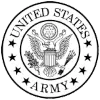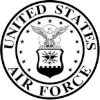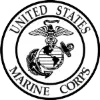Course Details
The SWSA- Securing the Web with Cisco Web Security Appliance v3.0 course is a 2-day course that is designed to teach students how to deploy proxy services, use authentication, implement policies to control HTTPS traffic and access, implement use control settings and policies, using the solution's anti-malware features, implement data security and data loss prevention, perform administration of Cisco WSA solution, and more. This class helps students prepare to take the exam, Securing the Web with Cisco Web Security Appliance (300-725 SWSA), which leads to the CCNP Security and Cisco Certified Specialist - Web Content Security certifications. The 300-725 SWSA exam certifies a student's knowledge of Cisco Web Security Appliance including proxy services, authentication, decryption policies, differentiated traffic access policies and identification policies, acceptable use control settings, malware defense, and data security and data loss prevention.
Topics covered in the course include:
- Describing Cisco WSA
- Deploying proxy services
- Utilize authentication
- Describing decryption policies to control HTTPS traffic
- Understanding differentiated traffic access policies and identification profiles
- Enforce acceptable use control settings
- Defending against malware
- Describing data security and data loss prevention
- Perform administration and troubleshooting
Target Student:
- Security architects
- System designers
- Network administrators
- Operations engineers
- Network managers, network or security technicians, and security engineers and managers responsible for web security
- Cisco integrators and partners
Prerequisites:
- TCP/IP services, including Domain Name System (DNS), Secure Shell (SSH), FTP, Simple Network Management Protocol (SNMP), HTTP, and HTTPS
- IP routing
Students are expected to have one or more of the following basic technical competencies or equivalent knowledge:
- Cisco certification (CCENT certification or higher)
- Relevant industry certification [International Information System Security Certification Consortium ((ISC)2), Computing Technology Industry Association (CompTIA) Security+, International Council of Electronic Commerce Consultants (EC-Council), Global Information Assurance Certification (GIAC), ISACA]
- Cisco Networking Academy letter of completion (CCNA 1 and CCNA 2)
- Windows expertise: Microsoft [Microsoft Specialist, Microsoft Certified Solutions Associate (MCSA), Microsoft Certified Solutions Expert (MCSE)], CompTIA (A+, Network+, Server+)
- Describing Cisco WSA
- Technology Use Case
- Cisco WSA Solution
- Cisco WSA Features
- Cisco WSA Architecture
- Proxy Service
- Integrated Layer 4 Traffic Monitor
- Data Loss Prevention
- Cisco Cognitive Intelligence
- Management Tools
- Cisco Advanced Web Security Reporting (AWSR) and Third-Party Integration
- Cisco Content Security Management Appliance (SMA)
- Deploying Proxy Services
- Explicit Forward Mode vs. Transparent Mode
- Transparent Mode Traffic Redirection
- Web Cache Control Protocol
- Web Cache Communication Protocol (WCCP) Upstream and Downstream Flow
- Proxy Bypass
- Proxy Caching
- Proxy Auto-Config (PAC) Files
- FTP Proxy
- Socket Secure (SOCKS) Proxy
- Proxy Access Log and HTTP Headers
- Customizing Error Notifications with End User Notification (EUN) Pages
- Utilizing Authentication
- Authentication Protocols
- Authentication Realms
- Tracking User Credentials
- Explicit (Forward) and Transparent Proxy Mode
- Bypassing Authentication with Problematic Agents
- Reporting and Authentication
- Re-Authentication
- FTP Proxy Authentication
- Troubleshooting Joining Domains and Test Authentication
- Integration with Cisco Identity Services Engine (ISE)
- Creating Decryption Policies to Control HTTPS Traffic
- Transport Layer Security (TLS)/Secure Sockets Layer (SSL) Inspection Overview
- Certificate Overview
- Overview of HTTPS Decryption Policies
- Activating HTTPS Proxy Function
- Access Control List (ACL) Tags for HTTPS Inspection
- Access Log Examples
- Understanding Differentiated Traffic Access Policies and Identification Profiles
- Overview of Access Policies
- Access Policy Groups
- Overview of Identification Profiles
- Identification Profiles and Authentication
- Access Policy and Identification Profiles Processing Order
- Other Policy Types
- Access Log Examples
- ACL Decision Tags and Policy Groups
- Enforcing Time-Based and Traffic Volume Acceptable Use Policies, and End User Notifications
- Defending Against Malware
- Web Reputation Filters
- Anti-Malware Scanning
- Scanning Outbound Traffic
- Anti-Malware and Reputation in Policies
- File Reputation Filtering and File Analysis
- Cisco Advanced Malware Protection
- File Reputation and Analysis Features
- Integration with Cisco Cognitive Intelligence
- Enforcing Acceptable Use Control Settings
- Controlling Web Usage
- URL Filtering
- URL Category Solutions
- Dynamic Content Analysis Engine
- Web Application Visibility and Control
- Enforcing Media Bandwidth Limits
- Software as a Service (SaaS) Access Control
- Filtering Adult Content
- Data Security and Data Loss Prevention
- Data Security
- Cisco Data Security Solution
- Data Security Policy Definitions
- Data Security Logs
- Performing Administration and Troubleshooting
- Monitor the Cisco Web Security Appliance
- Cisco WSA Reports
- Monitoring System Activity Through Logs
- System Administration Tasks
- Troubleshooting
- Command Line Interface
- References
- Comparing Cisco WSA Models
- Comparing Cisco SMA Models
- Overview of Connect, Install, and Configure
- Deploying the Cisco Web Security Appliance Open Virtualization Format (OVF) Template
- Mapping Cisco Web Security Appliance Virtual Machine (VM) Ports to Correct Networks
- Connecting to the Cisco Web Security Virtual Appliance
- Enabling Layer 4 Traffic Monitor (L4TM)
- Accessing and Running the System Setup Wizard
- Reconnecting to the Cisco Web Security Appliance
- High Availability Overview
- Hardware Redundancy
- Introducing Common Address Redundancy Protocol (CARP)
- Configuring Failover Groups for High Availability
- Feature Comparison Across Traffic Redirection Options
- Architecture Scenarios When Deploying Cisco AnyConnect® Secure Mobility
- Configure the Cisco Web Security Appliance
- Deploy Proxy Services
- Configure Proxy Authentication
- Configure HTTPS Inspection
- Create and Enforce a Time/Date-Based Acceptable Use Policy
- Configure Advanced Malware Protection
- Configure Referrer Header Exceptions
- Utilize Third-Party Security Feeds and MS Office 365 External Feed
- Validate an Intermediate Certificate
- View Reporting Services and Web Tracking
- Perform Centralized Cisco AsyncOS Software Upgrade Using Cisco SMA
To fully benefit from this course, you should have knowledge of these topics:
- TCP/IP services, including Domain Name System (DNS), Secure Shell (SSH), FTP, Simple Network Management Protocol (SNMP), HTTP, and HTTPS
- IP routing"
1498,1611,,100497,SVPN-Implementing Secure Solutions with Virtual Private Networks v1.0,0,0,Cisco,cisco.png,,cisco,"
The SVPN-Implementing Secure Solutions with Virtual Private Networks v1.0 course is a 5-day course that is designed to help students acquire the knowledge and skills to deploy and troubleshoot traditional Internet Protocol Security (IPsec), Dynamic Multipoint Virtual Private Network (DMVPN), FlexVPN, and remote access VPN to create secure and encrypted data, remote accessibility, and increased privacy.
Topics covered in the course include:
- Introducing site-to-site VPN options available on Cisco router and firewalls
- Introducing remote access VPN options available on Cisco router and firewalls
- Reviewing site-to-site and remote access VPN design options
- Reviewing troubleshooting processes for various VPN options available on Cisco router and firewall
Target Student:
This course is designed for professionals in the following job roles:
- Network security engineer
- CCNP Security candidate
- Channel Partner
Prerequisites:
- Familiarity with the various Cisco router and firewall command modes
- Experience navigating and managing Cisco routers and firewalls
- Clear understanding of the benefits of site-to-site and Remote Access VPN options
Available 24/7
Professional Instruction
Free Training Materials






Testimonials
This was the class I needed.
The instructor Jeff took his time and made sure we understood each topic before moving to the next. He answered all of our questions, and I don't know about the rest of the students, but was very pleased with this experience.
I finally understand how to use Excel.
-Amanda T (Yale New Haven Hospital).
Great class!
We were able to cover a lot of information in one day without getting overwhelmed.
-Maria R (Microsoft).
Free Repeats
Learn At Your Pace
No Travel
Professional Instruction
Affordable Pricing
Group Discounts



